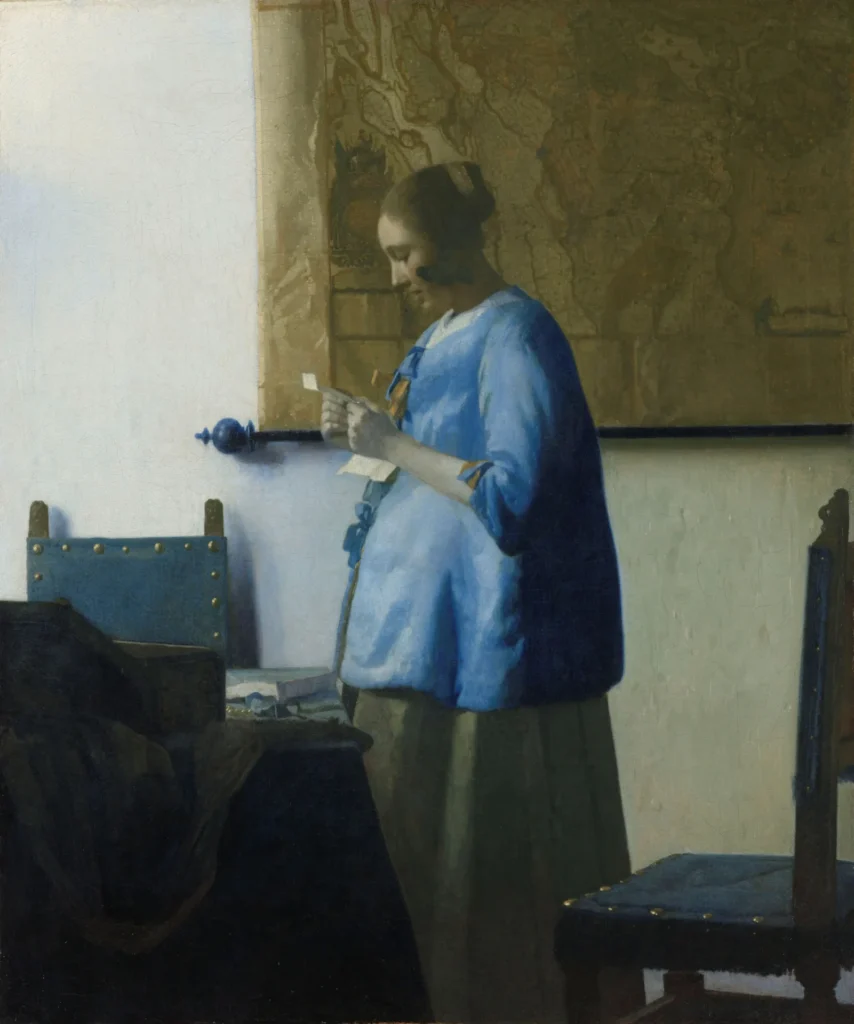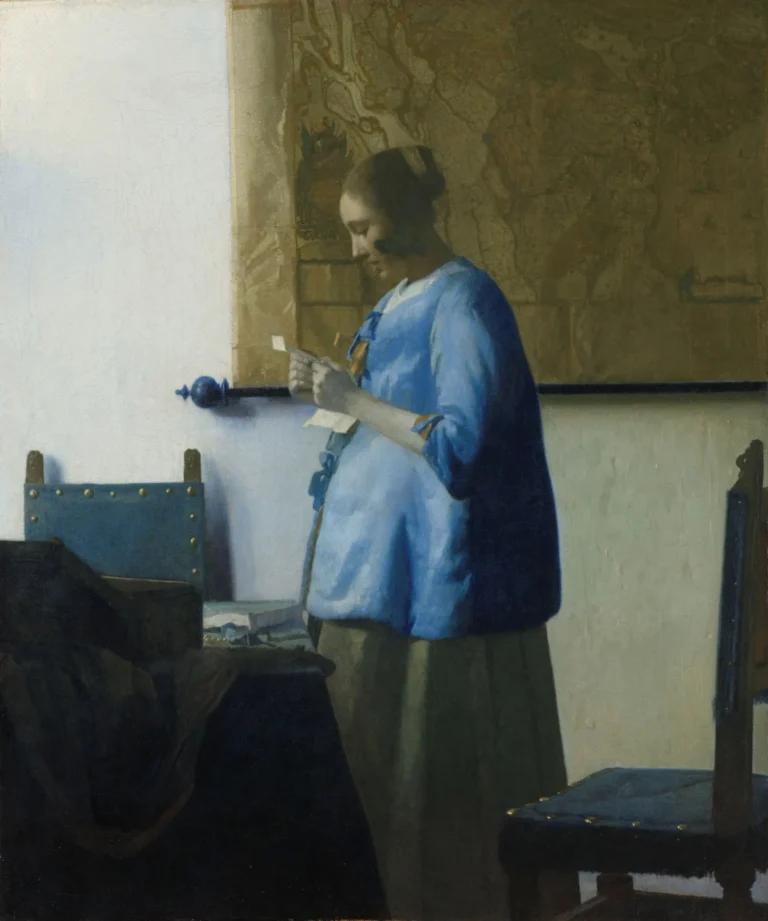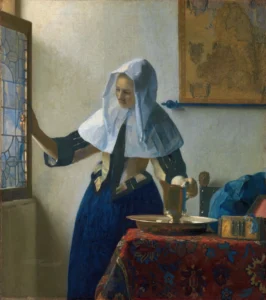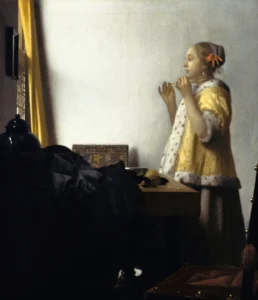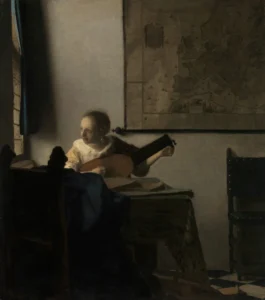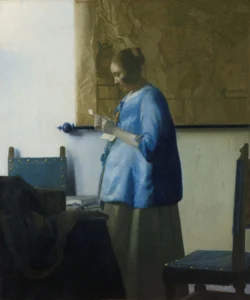Woman Reading a Letter (1663)
Created around 1663, Woman Reading a Letter by Johannes Vermeer exemplifies the intimacy and allure of domestic life during the Dutch Golden Age. The painting portrays a young woman engrossed in reading a letter, dressed in a traditional blue 'beddejak.' With symbolic elements and exquisite use of light, this artwork invites viewers into a private world, sparking intrigue about the letter's contents and the woman's emotions.
1663
About the Artwork
Woman Reading a Letter is steeped in mystery and intimacy. The scene captures a quiet moment in the life of a young woman, potentially reflecting themes of love and separation typical of the 17th-century Dutch society. Vermeer, known for his contemplative domestic scenes, utilizes light and color masterfully, creating an inviting yet enigmatic atmosphere. The letter, central to the composition, symbolizes personal connection and raises curiosity about its message. With cultural significance rooted in the social dynamics of the era, this painting continues to resonate with viewers, inviting interpretations and explorations of its themes.
Did You Know
The content of the letter remains a mystery, sparking debate among art historians and viewers alike about its possible meanings and the emotions it evokes in the woman.
The woman’s blue ‘beddejak’ reflects the fashion of the period, symbolizing the social status and domesticity of women in 17th-century Dutch society.
Vermeer’s use of ultramarine blue, a pigment made from ground lapis lazuli and quite expensive, emphasizes the painting’s serene atmosphere and highlights the artist’s mastery of light and texture.




